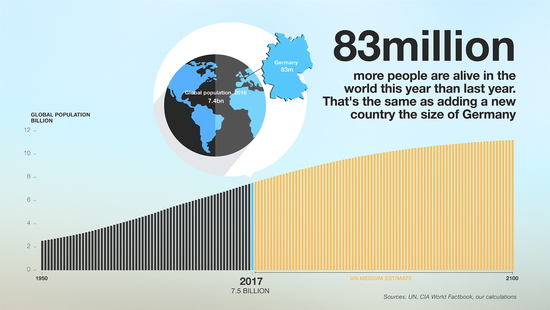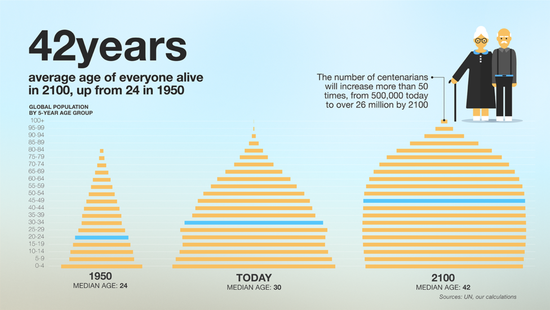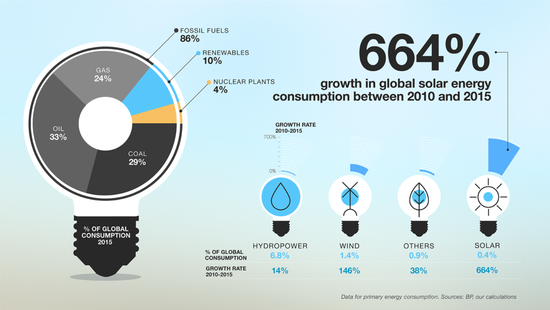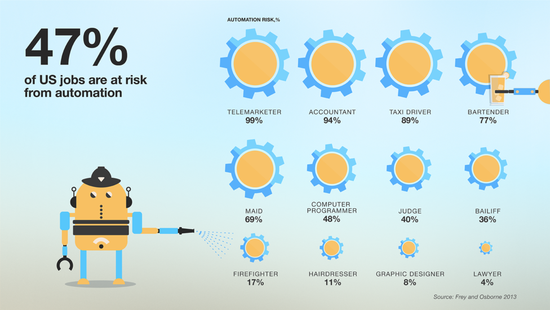April 5 news, according to BBC reports, from energy to human life, these key statistics will help define the earth after a hundred years.

1. How will the global population grow?

Chart: 83 million people - This year, 83 million more people were added than last year, which is equivalent to the addition of a new Germany to the Earth.
According to the United Nations, the global population will increase to 11.2 billion by 2100. But this is only a conservative estimate, full of uncertainty. By the end of this century, the population on Earth will likely reach 16.6 billion. Of course, the population may also be reduced to 7.3 billion, which is less than our current population of 7.5 billion. In the UN's forecast, the population will always maintain a growth trend until at least 2050.
2. Why does the average age increase?

Picture: 42 years old - average age of all people is 42 years old in 2100, and only 24 years old in 1950, the number of people over the age of 100 will increase more than 50 times
This is because humans live longer, and each person has fewer descendants. In 1950, many people in the world worried that they could not live 50 years old. Today, the average life span of the global population is close to 72 years old. By 2100, the average human life expectancy is expected to reach 83 years old. Longevity means more seniors, and a low birth rate means less human birth. For this reason, the so-called population pyramid is becoming a hive.
3. Where will humans live?

Figure: 66% - 66% of the world's population will live in cities by 2050, equivalent to 6.3 billion people
By 2030, there will be 41 super cities all over the world, and their population will exceed 100 million. By 2050, two-thirds of humanity will live in cities. Cities with large population density can use less land to accommodate more people. 6.3 billion urban dwellers (population density close to Mumbai) will be compressed into British-sized areas, while the population density (Atlanta City) population is equivalent to the U.S. area. Containing the sprawl of suburbs may be a priority issue for future super cities.
4. How to solve the world energy problem?

Chart: 664% - Between 2010 and 2015, global solar energy consumption increased by 664%
The vast majority of energy (86%) used by humans today is fossil fuels. Renewable energy accounts for only about 10%, but the share of the latter is rapidly increasing. By 2015, global solar energy consumption has increased 7.5 times over 2010. In the future, renewable energy will occupy the dominant position in the energy industry, and wind- and solar-energy-rich countries will have a huge advantage.
5. Will the work be replaced by automation?

Figure: 47% - Nearly half of jobs in the United States are threatened by automation
Researchers at Oxford University expect that half of the United States jobs will be replaced by robots or computers. But relatively speaking, some jobs may be more easily replaced by automation. In the next 10 to 20 years, telephone salesmen, accountants, and taxi drivers may all be replaced, and jobs requiring creativity, craftsmanship, or empathy will last longer. The future labor market must adapt to the pressure of automation. (small)
Custom Wire Harness Assembly
- Electrified dimensional build boards with 100% continuity test
- Capabilities to test for fuse,diode,resistor, and relay presence
- Mating test fixtures for lower production wire harnesses
- Ability to free hand build harnesses for prototypes and design validation
- Separate layout boards for addition of fir tree clips, rosebuds, clamps,and labels after coverings added
- Capabilities to add board interlocks and test markings to harness as needed
Custom Wiring Harness,Wiring Harness,Cable Assemblies,Wire Harness,Wire Harness Assembly Manufacturer
ETOP WIREHARNESS LIMITED , https://www.wireharness-assembling.com